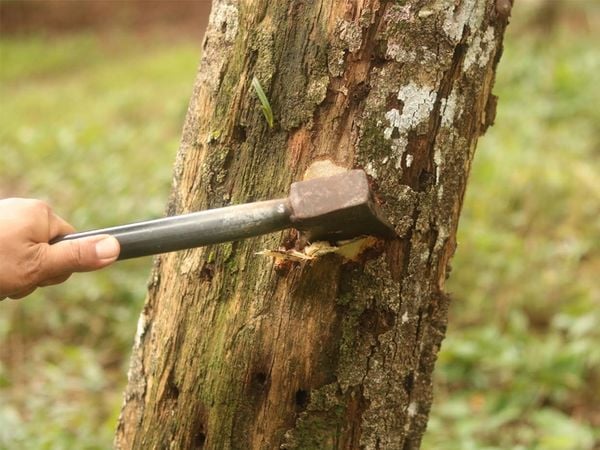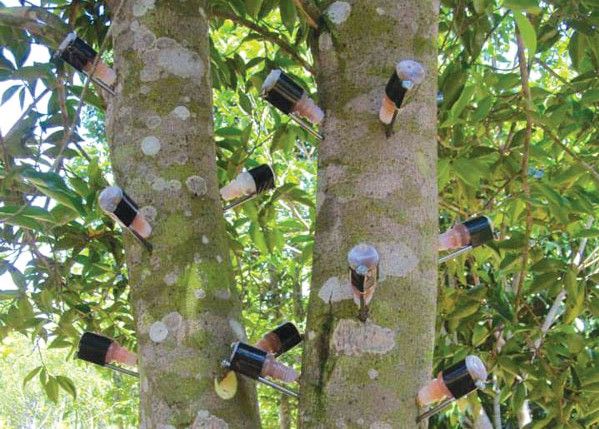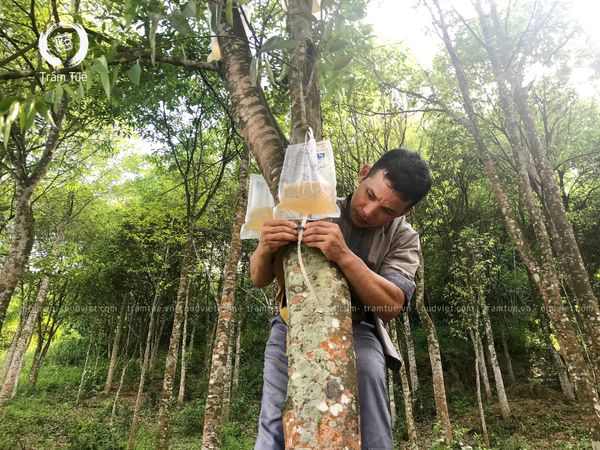3 Most Popular Methods of Creating Agarwood
In fact, Agarwood is born from injuries. Agarwood is the reaction of the wood molecules of the tree with external influences caused: natural wounds such as bombs and bullets, scratches caused by animals passing by, insect borers, assorted pathogenic fungi, etc. When an area is damaged, the sap will gather as a way to bandage the wound. The combination between the resin of the tree over time plus the impact of some other natural factors causes the wood in the injured area to gradually degrade and become dark. Where the wood contains a lot of essential oils that, when burned, have that fragrance called Agarwood.
Understanding the mechanism of Agarwood production of Aquilaria crassna tree, humans have devised a method to cause mechanical wounds to the trunk of the tree by the following ways:
Use a tight ax to create scratches
Drill holes
Nail...

People use axes to create wounds on the Aquilaria crassna (Illustration image. Source: Internet)
To create Agarwood, a prerequisite is that the tree must have a wound. Therefore, instead of waiting for the tree to be injured, the worker actively creates a wound for the tree so that microorganisms can easily enter. This method is very simple and easy to implement. However, the usual effects do not bring the desired effect. The yield of Agarwood is very little, requiring more catalysts and other agents.
Chemical method (using chemicals)
This is a method that gives quick results and a large yield of agarwood. Because the chemicals injected into the tree or swept on the trunk are often extremely strong chemicals, causing deep damage to the tree, thereby stimulating the creation of agarwood in a short time.

Chemicals are injected into the tree to stimulate the production of agarwood (Illustration image. Source: Internet)
However, this method has a huge disadvantage that is harmful to the health of the agarwood farmers as well as the users. When regularly exposed to toxic chemicals by touching or inhaling, farmers will be susceptible to dermatological and respiratory diseases. When burning or burning incense, the amount of smoke that still has chemical residues in products from Agarwood will cause users to experience stinging eyes, nose pain, headache, dizziness...
Biological method (using microbial products)
When the tree is infected with fungus or parasitic bacteria in the trunk, it will secrete resin to isolate the wound, on which agarwood is formed. The method of cultivating agarwood by microbial products is actually a method of causing disease to plants with a certain fungus or bacteria that has been identified. Currently, Agarwood is following this method, although the yield is not as much as using chemicals, the advantage is to create clean and safe Agarwood for the health of consumers as well as producers.

Tram Tue's staff is planting a microbial solution for Do Bau tree
To help readers better understand the advantages - disadvantages as well as techniques of each method of creating Agarwood on Agarwood tree, Tram Tue will write more carefully in another article.


































